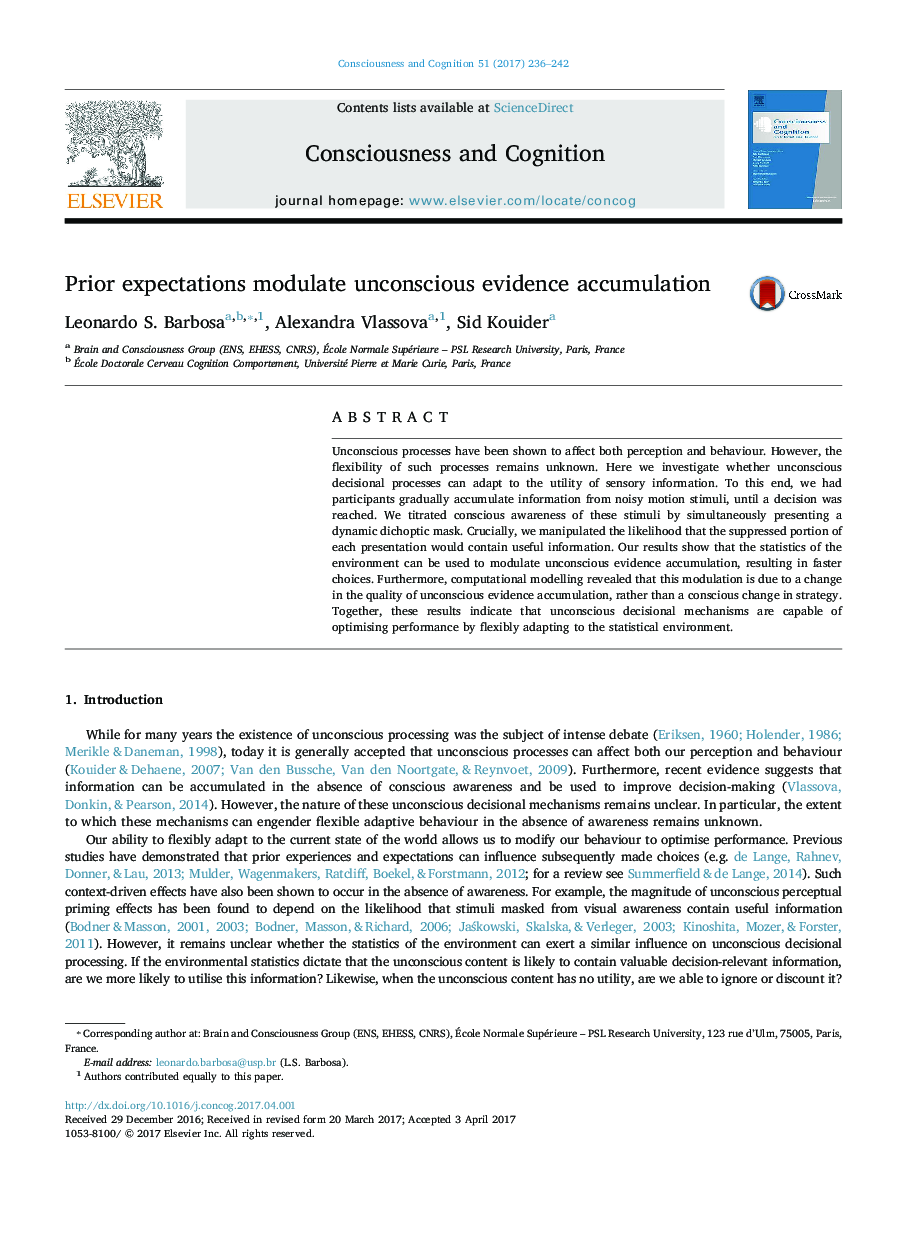| Article ID | Journal | Published Year | Pages | File Type |
|---|---|---|---|---|
| 5041849 | Consciousness and Cognition | 2017 | 7 Pages |
â¢Participants made decisions using noisy motion stimuli.â¢This requires information to be gradually accumulated.â¢We titrated conscious awareness of these stimuli using a dynamic dichoptic mask.â¢Unconscious decisional processes are modulated by statistical regularities.â¢Such modulation produces flexible and adaptive behaviour that optimises performance.â¢A computational model shows evidence changes in unconscious evidence accumulation.â¢Ruling out changes in performance as a conscious change in strategy.
Unconscious processes have been shown to affect both perception and behaviour. However, the flexibility of such processes remains unknown. Here we investigate whether unconscious decisional processes can adapt to the utility of sensory information. To this end, we had participants gradually accumulate information from noisy motion stimuli, until a decision was reached. We titrated conscious awareness of these stimuli by simultaneously presenting a dynamic dichoptic mask. Crucially, we manipulated the likelihood that the suppressed portion of each presentation would contain useful information. Our results show that the statistics of the environment can be used to modulate unconscious evidence accumulation, resulting in faster choices. Furthermore, computational modelling revealed that this modulation is due to a change in the quality of unconscious evidence accumulation, rather than a conscious change in strategy. Together, these results indicate that unconscious decisional mechanisms are capable of optimising performance by flexibly adapting to the statistical environment.
